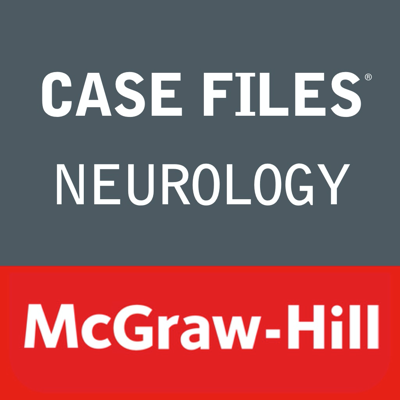Ratings & Reviews performance provides an overview of what users think of your app. Here are the key metrics to help you identify how your app is rated by users and how successful is your review management strategy.
The innovative case-based way to learn neurology – completely revised for today’s shelf exam. Medical students need exposure to cases to pass the USMLE® and shelf exams, and this is exactly what Case Files: Neurology, Third Edition offers. Written by experienced educators, it teaches students how to think through diagnosis and management when confronting neurological clinical problems. Sixty high-yield clinical cases focus on the core competencies for the neurology clerkship. Each case includes extended discussion, definition of key terms, clinical pearls, and USMLE-style review questions. This interactive learning system helps students learn instead of memorize. The Third Edition has been completely revised with new questions, enhanced discussions, and better alignment with the challenging shelf exam to give students an unmatched review and learning tool. • Clinical pearls highlight key points • Reflects the most recent clerkship guidelines and core curriculum • Helps students learn in the context of real patients This free application includes 1 sample case study from the 60 that are available through an in-app purchase of $34.99 of Case Files Neurology, Third Edition. The 60 high-yield neurology cases will help you excel on the clerkship and improve your shelf-exam score. Each case has been designed for the iPad and iPhone/iPod with interactive features. With this system, you will learn in the medical context of real patients, rather than merely memorizing facts. iPhone, iPod, and iPad App Features: • Highlight key concepts while studying •Study/Exam/Bookmark modes are available for USMLE-style review questions. •In the Study mode, check the answers as you tackle the questions. •In the Exam mode, time yourself and review the answers after the time is up. •In the Bookmark mode, review only the questions you have flagged for further study. •File away correctly answered questions after each practice quiz. •Choose the number of questions in each practice quiz: 25, 50, 75, 100, 150, or all. •Opt to include questions from previous quizzes. •Learn further from interactive questions at the end of each case, with explanations. •Sort cases by name or by case number. •Take down notes using the Notes section for each case. •Study in horizontal or vertical mode on the iPhone and the iPad. •Store quiz scores to track your progress. •Highlight key points in cases •Save to iCloud to use app on multiple devices •Choose preferred font sizes •Create tags for each case •Search cases by title or by tags App Contents: Section I: How to Approach Clinical Problems •Part 1. Approach to the Patient •Part 2. Approach to Clinical Problem Solving •Part 3: Approach to Reading Section III: Clinical Cases: 60 Case Scenarios •Listing by Case Number •Listing by Disorder Each case includes the following sections: Case Description •Answers to •Approach to •Clinical Pearls •Case Questions and Answers • References About the Authors Eugene C. Toy, MD is Professor and Residency Program Director, Department of Obstetrics and Gynecology, The Methodist Hospital-Houston, The University of Texas-Houston McGovern Medical School. Ericka P. Simpson, MD is Co-Director, MDA Neuromuscular Clinic, Department of Neurology, The Methodist Hospital-Houston, The University of Texas-Houston McGovern Medical School. Pedro Mancias, MD is Professor and Assistant Dean of Diversity and Inclusion and Student Affairs and Admissions, Department of Pediatrics, The University of Texas-Houston McGovern Medical School. Erin E. Furr Stimming, MD is Associate Professor and Clerkship Director, Department of Neurology, The University of Texas-Houston McGovern Medical School.





